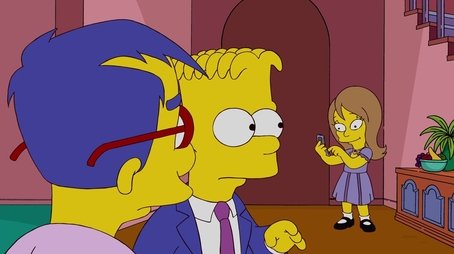
Sorry, we have not watched this yet.

Bart falls in love with a charitable girl named Jenny, prompting Bart to behave in order to date her. Meanwhile, Lisa becomes depressed when she writes a report on Springfield's future.
Sorry, we have not watched this yet.